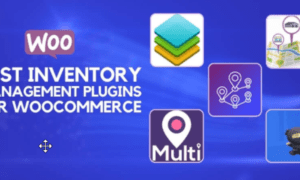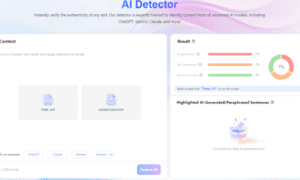Best Practices in IT Procurement: A Guide for Success
Navigating the world of procurement can be like traversing a digital jungle. There’s much to consider, from selecting the right vendors to managing costs and ensuring compliance. But don’t worry—here’s a guide to help you understand the best practices in procurement.
Understanding Its Importance
Before diving into the best practices, let’s clarify the procurement process. In simple terms, this process is acquiring information technology products and services. It can range from software and hardware to consulting services and cloud solutions. The goal is to ensure your organization has the right technology to achieve its objectives.
Start with a Clear Plan
Like any successful project, good procurement starts with a solid plan. Here’s how to set yourself up for success:
- Define Your Needs: Define clearly what your organization needs. Are you looking for new software, hardware, or a cloud solution? Get input from various departments to ensure all needs are considered.
- Set a Budget: Establish a realistic budget. This will narrow down your options and avoid overspending. Consider the upfront costs and ongoing expenses like maintenance and support.
- Create a Timeline: Set a reasonable timeline for your procurement process. Factor in time for research, vendor evaluations, negotiations, and implementation.
Research and Vendor Management
Once you have a plan, it’s time to start looking at potential vendors. This is where thorough research and effective vendor management come into play.
- Research Vendors: Do your homework. Get vendors with a solid track record, good reviews, and products or services that match your needs. Don’t just rely on online reviews—reach out to other businesses that have used the vendors you’re considering.
- Request Proposals: Invite vendors to submit proposals. This not only helps you understand what they offer but also gives you a chance to compare different options. Ensure your proposal request is detailed and clear about your needs and expectations.
- Evaluate Proposals: Evaluate each proposal against your criteria. Consider factors like cost, features, support, and scalability. Ask for demos or trials to get a better feel for the products.
Negotiation and Contract Management
Negotiation is a critical part of the procurement process. Here are some tips to help you get the best deal:
- Negotiate Terms: Don’t just focus on the price. Negotiate other terms like payment schedules, delivery times, and support. Aim for a situation where both party’s needs are met.
- Read the Fine Print: Contracts can be complex, but it’s crucial to understand all terms and conditions. Pay special attention to clauses related to warranties, liabilities, and termination.
- Manage Contracts: Once the contract is signed, manage it effectively. Keep track of critical dates, obligations, and performance metrics. Regularly review the contract for compliance and promptly address any issues.
Risk Management
Every procurement process involves risks. Identifying and managing these risks helps avoid potential pitfalls.
- Identify Risks: Consider risks related to vendor reliability, technology changes, data security, and compliance. Prepare a risk management plan that addresses these risks.
- Mitigate Risks: Implement measures to mitigate identified risks. This might include conducting regular vendor audits, investing in cybersecurity measures, or setting aside contingency funds.
- Monitor and Review: Monitor the effectiveness of the procurement process and your risk management strategy. Adjust as needed to address new risks or changes in circumstances.
Embrace Technology
Leveraging technology can significantly enhance your procurement process. Here’s how:
- Use Procurement Software: Consider using procurement software to streamline the process. These tools can help with everything from creating RFPs to managing contracts and vendor relationships.
- Leverage Data Analytics: Apply data analytics for more insights into procurement activities. This will identify trends, monitor performance, and make informed decisions.
- Automate Where Possible: You can save time and reduce errors. Automate repetitive tasks like order processing, invoicing, and reporting.
Building Strong Vendor Relationships
Strong relationships with vendors can lead to better deals, improved service, and more innovative solutions. Here’s how to build and maintain these relationships:
- Communicate Regularly: Keep communication lines open. Regular updates and check-ins can help address issues before they become problems.
- Be Transparent: Be clear about your expectations and provide feedback. Transparency fosters trust and collaboration.
- Foster Collaboration: Treat your vendors as partners. Work together to achieve mutual goals and look for ways to innovate and improve.
Conclusion
Mastering the procurement is about more than just getting the best price. It involves careful planning, thorough research, effective negotiation, and strong relationship management. By following these best practices, you can ensure your organization gets the right technology to drive success while managing risks and costs effectively.
Remember, the key to successful IT procurement is being proactive, staying informed, and continuously seeking improvement. Happy procuring!



































